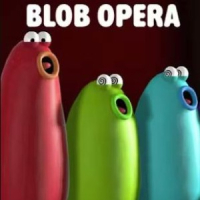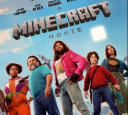
Blob Opera Review
Blob Opera
The first time I stumbled upon Blob Opera, I felt an unexpected thrill—a combination of curiosity and subtle delight. I had heard of it in passing, whispered by a friend who claimed it was like stepping into a surreal world where art met technology. As I loaded the page, I was greeted by a vivid display characterized by abstract shapes and bright pastel colors. The interface was minimalistic yet inviting, instantly drawing me in and encouraging exploration without overwhelming me.
The Interactive Experience
What immediately captivated me was the interactive nature of the game. Blob Opera is not a traditional game with levels or competitors; instead, it is an interactive canvas for musical experimentation. I discovered that by dragging the blobs around the screen, I could modulate their pitches and timbres, which then contributed to an evolving polyphonic ensemble. Each action felt intuitive and smooth, offering both playful experimentation and a deeper dive into the realm of sound. The experiment felt both personal and boundless, allowing me to create a range of harmonic expressions.
Musical Composition and Sound Dynamics
Once I started interacting with the blobs, I realized that the sound generation was far from ordinary. The system, powered by machine learning algorithms, allowed for an almost organic creation of music. Every movement on my part contributed to a melodic dialogue, and the blobs responded in kind. I spent considerable time exploring the effect of different combinations of notes. The resonant, warm tones felt immersive, speaking to my inner creative spirit. The various sound layers seamlessly intertwined to produce harmonies that were both surprising and deeply pleasing to my ears.
Artistic Design and Visual Aesthetics
The visual design of Blob Opera struck me as remarkably well-balanced. The atmosphere is reminiscent of a modern art piece, where abstraction meets minimalism. I appreciated the clean lines, the gentle curves of the blobs, and the choice of soothing, yet playful colors. The contrasts between the vibrant background and the softer tones of the blobs created a sense of dynamism and harmony. Observing the visual interplay of elements made the experience feel like a living, breathing artwork, replete with movement and subtle variations that kept me engaged throughout.
User-Friendly Interface and Navigation
One of the standout features for me was the design of the user interface. It is evident that a considerable amount of effort was dedicated to designing Blob Opera so that it remains accessible to users regardless of their technical expertise. The layout is straightforward—everything from adjusting the position of the blobs to rediscovering hidden settings was clearly laid out with simplicity in mind. Every interactive element was responsive, and I never felt lost navigating the various options. The ease with which I moved around the digital space made it possible for me to focus entirely on the creative process rather than on overcoming technical obstacles.
The Role of Technology and Machine Learning
The underlying technology behind Blob Opera fascinated me more as I delved deeper into its workings. The use of machine learning to generate music based on user input was an innovative twist that challenged my understanding of digital art. It was evident that the developers had harnessed modern algorithms to create an ever-evolving musical landscape. This technology allowed Blob Opera to not only emulate classical opera styles but also to invent new harmonies in real time. I was particularly impressed by how well the system balanced algorithmic precision with a human touch—an impressive feat that made the experience feel both rigorous and warmly unpredictable.
Exploration of Operatic Elements
Blob Opera, at its core, is a playful homage to the world of opera. The blobs themselves were akin to miniature opera singers, each possessing its own unique vocal qualities. As I experimented with different spatial arrangements, I discovered that the system could mimic the interplay of voices in a full operatic performance. This intriguing interplay between the synthetic and the classical bridged two disparate worlds—the traditional art form of opera and the modern innovation of interactive technology. I found myself marveling at how a simple set of digital creatures could evoke the grandeur and emotional depth of a live opera performance.
Personal Creativity and Experimentation
One of the most fulfilling aspects of my time with Blob Opera was the freedom it afforded my creative impulses. I felt empowered to experiment with musical motifs that, in a classical setting, I might never have dared explore. The casual, liberating environment encouraged me to push boundaries and try out new melodies and harmonies. Whether I was orchestrating a subtle pizzicato of tones or layering complex harmonic structures, every experiment felt like a dialogue between my inner muse and the digital canvas. This creative journey was exhilarating and reaffirmed my belief in the limitless possibilities provided by technology in the realm of art.
Emotional Impact and Engagement
Throughout my exploration, I was struck by the emotional resonance of the experience. Blob Opera is not just a tool for generating sound—it is a medium that communicates through emotion. At times, the harmonious voices stirred feelings of joy and exuberance, while in other moments, the delicate interactions among the blobs evoked a sense of soulful nostalgia. Even after prolonged interaction, I found that the experience continued to evoke a range of sensations, from reflective calm to contagious energy. The subtle shifts in musical intensity were particularly engaging, as they seemed to respond directly to my emotional state and creative input.
Technical Stability and Performance
In my interactions with Blob Opera, the technical performance was remarkably stable. I paid close attention to response times and found no significant lag or technical glitches to hinder the creative process. The platform was engineered in a way that resource usage was optimized, which meant even on my less powerful devices, the experience remained smooth and uninterrupted. The consistent performance underscored the developers' commitment to quality and their attention to optimizing every facet of the platform. This technical reliability allowed me to immerse myself fully in the creative process without the distraction of performance issues.
Integration of Educational Elements
Another striking feature of Blob Opera, which resonated with my passion for learning, was its implicit educational value. While the primary aim is to entertain and inspire, the interface subtly introduces fundamental concepts of musical theory and harmony. As I experimented with different pitches and tones, I could intuitively grasp how slight modifications influenced the overall sound. The interactive nature of the platform led me to explore the relationships between individual voices and collective harmonies, offering me a glimpse into more complex musical structures. This integration of play and learning created a rich environment where creativity and education coalesced beautifully.
Adaptability for Different Audiences
Blob Opera was engineered to captivate a broad spectrum of audiences, and I had the chance to witness that rich diversity firsthand. Whether you are a seasoned music enthusiast or someone with little to no background in operatic traditions, the platform's intuitive design makes it accessible and engaging. I noticed that the layout and options were crafted to accommodate users of different ages and levels of expertise. During my session, I even speculated about how children might enjoy the playful, colorful blobs while learning about musical dynamics in a fun, interactive way. Blob Opera’s widespread charm highlights its carefully crafted design and a core vision that embraces everyone.
Future Potential in Digital Arts
My journey with Blob Opera has left me pondering about its potential as a groundbreaking tool in digital art. Its seamless fusion of technology and creativity suggests that such platforms might represent the future of interactive art installations. As I manipulated the blobs and witnessed the immediate transformation of my actions into a melodic narrative, I became aware of the broader implications for digital creativity. Blob Opera is a significant step forward in using machine learning not merely for functional purposes but as a genuine medium for artistic expression. I couldn’t help but imagine how future iterations might integrate more complex musical elements or even bring in collaborative features for group performances.
Personal Connection and Rediscovery of Music
Spending time with Blob Opera awakened a personal connection to music that I had not experienced in a long while. The playful manipulation of the sound landscape brought back memories of early experiments with musical instruments that, for me, were both nostalgic and invigorating. It was as if each blob, with its distinctive voice, beckoned me to partake in its creation, turning a digital space into a realm of personal expression. What stood out was not just the novelty of the experience but the profundity of the emotional engagement it fostered. I found that the playful, unstructured nature of the interface invited me to rediscover music on a level that traditional media rarely offer.
Interactivity and Customization Options
Another exciting aspect of Blob Opera is the degree of interactivity and the range of customization options available. I was pleasantly surprised to find that the platform offers control over various parameters, such as pitch, volume, and tempo, allowing for a highly tailored musical experience. The flexibility extended by these controls enabled me to experiment with conventional and avant-garde musical structures. Each blob was an agent of creative freedom, with the ability to contribute unique elements to the ensemble. By adjusting the positions or even pairing certain voices deliberately, I was actively authoring a piece of performance art—one that was as unpredictable as it was delightful. This level of customization reinforced my desire to explore the endless permutations of musical expression offered by the platform.
Accessibility and Global Reach
While exploring Blob Opera, I was struck by its inherent accessibility. The platform does not demand a steep learning curve or specialized knowledge to be appreciated. Its design caters to a global audience, inviting participation from anyone regardless of their musical background or cultural context. I was struck by how Blob Opera dismantles conventional obstacles to intricate musical performance, thereby fostering an atmosphere of collective creativity and unity. Each session felt international—a celebration of melody and rhythm that transcended language and cultural divides. The inclusive nature of the experience left me feeling like part of a larger community, one that values art as a universal medium for personal and collective expression.
Unexpected Discoveries and Moments of Delight
Perhaps one of the most delightful aspects of my experience was the series of unexpected discoveries that Blob Opera offered. As I played around with the settings and observed the resulting soundscape, I was constantly surprised by the serendipitous harmonies that emerged. These moments of surprise, where the virtual voices aligned perfectly or produced a particularly moving sequence, added an element of magic to the entire interaction. The unpredictability of the process was not just a technical feature; it was an artistic statement in itself. It invited me to embrace uncertainty as a wellspring of creativity, encouraging a mindset where mistakes could potentially lead to beautiful, unforeseen results. Each unexpected twist in the auditory narrative became a moment of connection between the user and the digital art form.
Reflections on the Integration of Art and Technology
As I spent more time engaging with Blob Opera, I began to reflect on the broader implications of such a hybrid digital experience. The platform is a prime example of how technology can serve as a facilitator of artistic expression, rather than merely a tool for recreation. My interaction with the blobs underscored the potential of thoughtful algorithmic design to create something that feels both organic and innovative. The merging of operatic tradition with modern interactive design has created a space where art and technology collaborate seamlessly. This journey was not just about controlling sound but rather about a truly immersive artistic process that felt as much like sculpting emotion as it did like playing a game.
Blob Opera

To download the app, you will get links to the Official Website and/or official digital markets.






